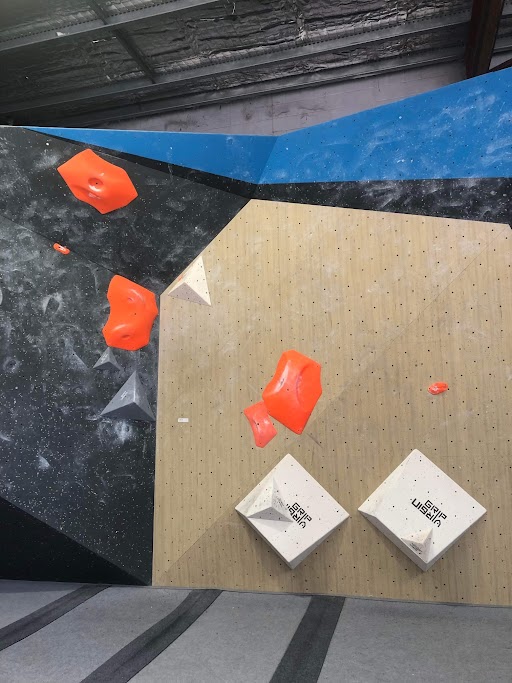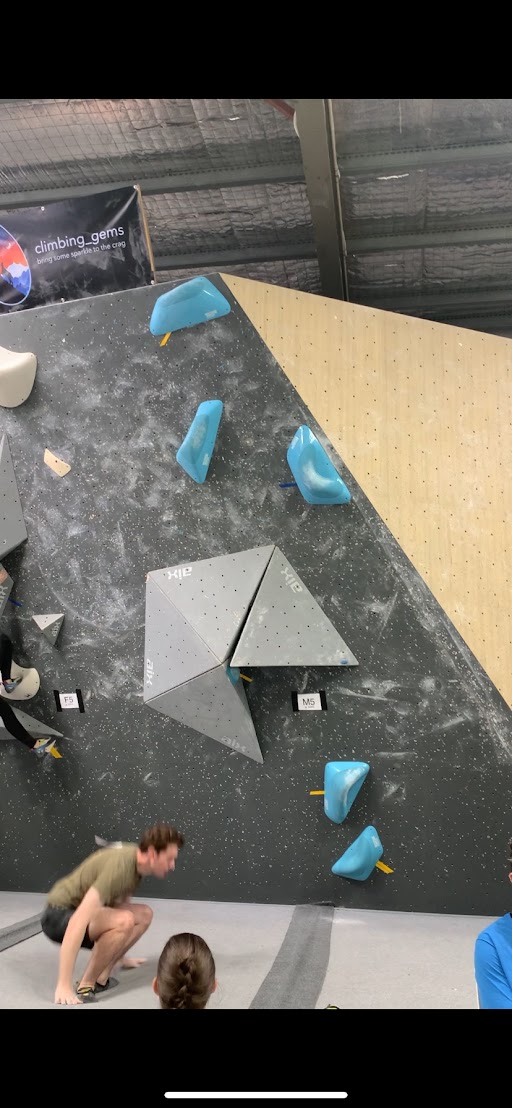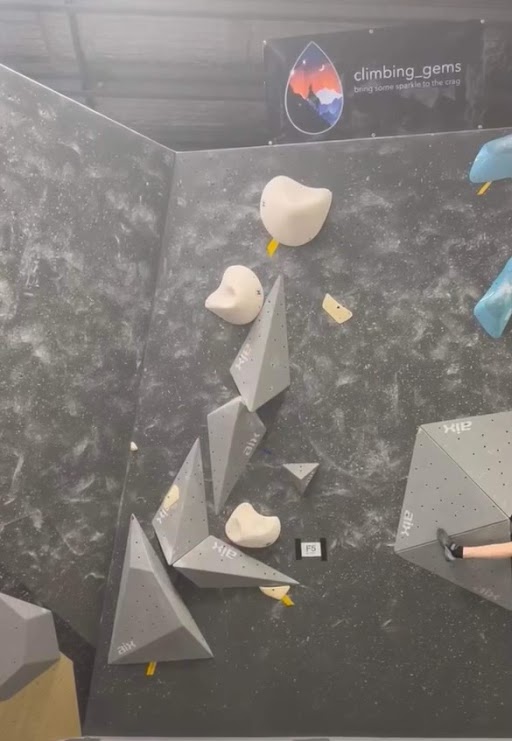Setting The Scene
Routesetting has always interested me. For two years now it’s been an enjoyable journey with different challenges, the most recent, setting for the Queensland State Boulder Titles.
This was my first major competition I’ve set. The only competition experience I had coming into this was the competition simulations I’ve set at Bould Move for our High Performance Athlete Program.
The general gist of the week was: 3 days to create 74 competitive boulder problems (divided between the team of 5 setters), test them and make the needed changes for each boulder.

Set Days, Best Days
Arrival Day. Hype. Big smiles. After meeting the team and talking about the comp, we briefed about the day and what was to come…setting the Open A & B Finals.
We set the finals first. We mark the hold locations on the wall then remove them to set for the rest of the comp.
I haven’t had the opportunity to travel as a routesetter and work with holds outside of my home gym Bould Move, so not having any familiar holds or volumes to work with, while also needing to set on new wall angles was a very stretching experience.
Although I was happy with the finished product of my final problems, they took quite a lot more tweaking than I wanted.
Day one felt pretty daunting, but I feel like I put up some great problems for athletes to show off on.
A personal reflection for day one was that I set within my comfort range and I didn’t try to set many new moves.

It took me until the end of day two to finally get out of my comfort zone with my setting style.
I put together my two best boulders, the Open A qualifier climbs, being F4 (Female boulder problem 4) and M4 (Male boulder problem 4).
With the qualifying round set last, I had the most time to get accustomed to the holds, walls and volumes, which meant I could produce my best work. M4 had a simple but powerful overall feeling, starting in an undercling and gaston, moving through a crack up to some powerful moves on pinches. A powerful athlete splitter that demands good climbing or you exhaust yourself with attempts. F4 had a similar underlying theme, demanding good climbing, but adding complexity too. Both climbs functioned perfectly.
Coming Home
My main learnings can be narrowed down to three things.
- Setting inside my comfort zone achieved functional climbs. Setting outside of it gives me the chance to grow as a setter.
- Testing and tweaking means more than simply sending the climb you’ve set or saying “yeah that’s good, feels this grade”. It means feeling each move, making sure the move’s difficulty is accurate for the grade.
- Step back from the wall and see how it looks with someone climbing it. This helped me identify the areas that need attention but also showed me what looks and functions well.

My first competition setting experience was awesome.
The people, the competitors, the organisers, the crowd.
It’s an experience that I value highly and am excited to experience again some time soon.